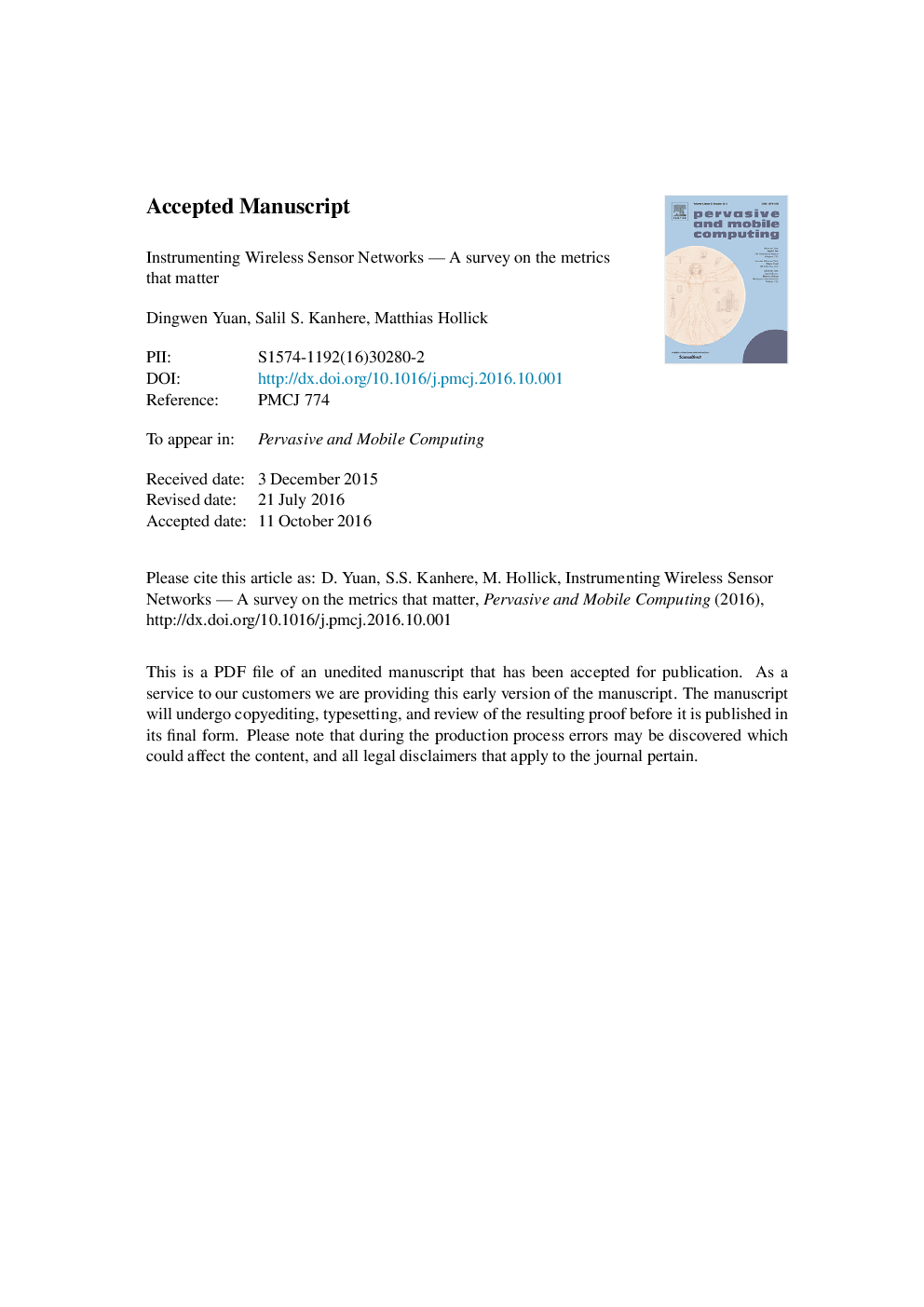| Article ID | Journal | Published Year | Pages | File Type |
|---|---|---|---|---|
| 4957451 | Pervasive and Mobile Computing | 2017 | 50 Pages |
Abstract
Wireless Sensor Networks (WSN) are part of the technical fundament enabling the 'Internet of Things' (IoT), where sensing and actuator nodes instantaneously interact with the environment at large. As such they become part of everyday life and drive applications as diverse as medical monitoring, smart homes, smart environment, and smart factories, to name but a few. To acquire data, individual sensors interact with the physical environment by sensing physical phenomena in proximity. The wireless network connectivity is leveraged to collect the raw data or pre-processed events, and to disseminate code, queries or commands. Actuating capabilities facilitate instant interactions with the environment or application processes. Experience on how to operate large scale heterogeneous WSNs in (critical) real-world applications is still scarce, and operational considerations are often an afterthought to WSN deployment. A principled look into the metrics, i.e., a standard or best practice of measurement of the 'vital' parameters in WSNs is still missing. In this article, we contribute a survey on the most important metrics to characterize the performance of WSNs. We define an abstract system model for WSNs, take a look on what the WSN community considers 'metrics that matter', and categorize the metrics into scopes of relevance. We discuss the properties of the metrics as well as practical aspects on how to obtain and process them. Our survey can serve as a 'manual' for implementors and operators of WSNs in the IoT.
Related Topics
Physical Sciences and Engineering
Computer Science
Computer Networks and Communications
Authors
Dingwen Yuan, Salil S. Kanhere, Matthias Hollick,
